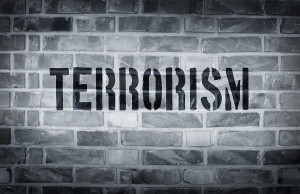

 Terrorism insurance markets should remain stable even as threats rise and the types of attacks have continued to evolve. That’s thanks to a nimble and proactive industry, Marsh asserts in a new report assessing the risk in 2018.
Terrorism insurance markets should remain stable even as threats rise and the types of attacks have continued to evolve. That’s thanks to a nimble and proactive industry, Marsh asserts in a new report assessing the risk in 2018.
“Overall property terrorism insurance capacity is abundant, and barring unforeseen changes, is likely to remain stable in 2018, backed by new entrants and a commitment by incumbents to underwrite the risk,” Marsh said in its report. “Although attacks continue, insured losses have been limited in frequency and pricing.”
One reason for that involves plenty of proactive responses from insurers in different markets seeking to keep their coverage current and sensible.
For Tier 1 cities, for example, insurers tend to require higher pricing and continue to scrutinize central business districts to keep up on current events and issues. This involves cities where the perceived risk of terrorism is higher and insurers have “significant” liabilities: New York, London, Frankfurt, Toronto, Singapore, Chicago, Los Angeles, Washington, San Francisco and other similar cities.
Insurers are also deploying capacity closer to buyers’ headquarters, such as London-based insurers establishing beachheads in the U.S. and Asia or adding resources to both areas. This lets them be more responsive and flexible to their clients’ evolving needs.
Political Violence, Cyber Cover Now Part of Terrorist Insurance Equation
The market has also responded as terrorism risks evolved. Marsh noted, for example, that more insurance clients are adding political violence coverage to their standard terrorism insurance coverage. Many have also seen the need to add cyber-related business interruption coverage at both owned and non-owned facilities, due to the potential of cyber-related terrorist attacks.
Being nimble, however, hasn’t been easy. Marsh points out that terrorism has evolved rapidly, with the emergence of lone wolf attacks and smaller groups seeking to hit soft targets. Other changes: terrorists have increasingly used vehicles as weapons, and cyber terrorist attacks have increased.
Marsh noted some trends and predicts many others in its report:
Marsh’s full report is the 2018 Terrorism Risk Insurance Report.
Source: Marsh